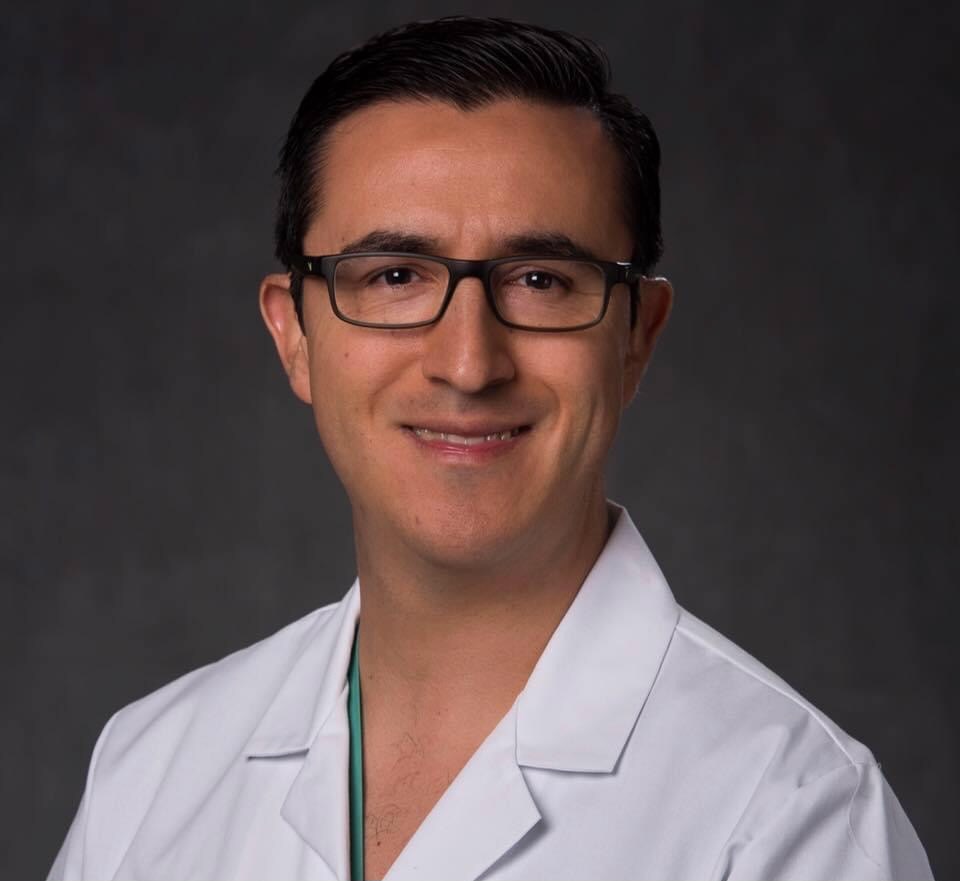Preparing for Disaster: UNM Hospital Participates in Region-Wide Emergency Training

Gut Check
UNM Gastroenterology Brings Interventional Endoscopy to New Mexico
“Third space endoscopy” sounds a little like something from a sci-fi film, but it’s actually an umbrella term for cutting-edge procedures that spare patients from undergoing major invasive surgeries in the gastrointestinal tract.
Antonio Mendoza Ladd, MD, associate professor in The University of New Mexico Division of Gastroenterology & Hepatology, has been performing these endoscopic procedures at UNM Hospital since he joined the faculty in July.

Currently, UNM is the only place in the state, and one of the few in the country, that is offering these techniques
“The Japanese are the ones who first pioneered these minimally invasive techniques,” Mendoza Ladd says. “Currently, UNM is the only place in the state, and one of the few in the country, that is offering these techniques.”
The new methods are suitable for a variety of problems, he says. These include achalasia, in which people have an impaired ability to swallow normally due to a problem in the esophagus, gastroparesis, a disorder that blocks the normal passage of food from the stomach into the small bowel, and pre-malignant and malignant poyps and tumors in the GI tract.
Jennifer Astello had been suffering from achalasia for seven months when she underwent a per-oral endoscopic myotomy (POEM) at UNMH on September 23 – the first such procedure performed by a gastroenterologist in New Mexico. During the POEM, Mendoza Ladd passed a slender tubular lighted instrument called an endoscope down her esophagus and used special tools to make a cut in the ring of muscle at the end, allowing food to reach the stomach.
Until then, Astello, at the time working as a news producer at KOAT-TV, had been dealing with a bewildering series of symptoms. She couldn’t keep food down or drink anything other than coffee or green tea. “It progressed really quickly,” she says. “I ended up in the ER. I couldn’t eat the tiniest things – I could only eat a teaspoon of food at a time.”
Astello had to take temporary leave from her job and experienced a dramatic weight loss as she underwent a procedure that used a balloon to open the esophageal sphincter, which worked for a brief time. Doctors also tried to get the muscle to relax by injecting it with botox, but the effect only lasted for a few weeks.
Her doctors finally started scheduling her for surgery in Colorado, but then she learned about Mendoza Ladd. “He got me in as soon as he could, and then I was on the waiting list,” she says.
Following the procedure at UNMH Astello only required an overnight stay in the hospital for observation. “I went back to work after four days,” she says.
The recovery process was “a little weird” as the internal incision healed up, and she was on a no-exercise restriction for the first month, she says, but soon she was feeling like her old self. “I feel so much better,” she says. “I can basically eat and drink everything that I could before.”
Mendoza Ladd says that for patients suffering from gastroparesis, he performs a procedure called gastric-per-oral endoscopic myotomy (G-POEM). “We do the same thing with a camera that goes through the mouth, with similar outcomes as with the one for achalasia,” he says.
For polyps and tumors in the GI tract, he employs a technique called endoscopic submucosal dissection (ESD), a minimally invasive technique that allows gastroenterologists to remove these lesions with a tiny camera, instead of surgery. Some of the most common lesions encountered are colon polyps, the precursors of colon cancer.
“It’s the same deal,” he says. “Before ESD was available, patients with these tumors or polyps would have had to undergo major invasive surgeries in which parts of or their entire esophagus, stomach or colon had to be removed.
“These surgeries are prone to complications and require long and painful recovery periods. With ESD we remove these same lesions with a camera. Patients avoid painful skin incisions and they go home the same day.”